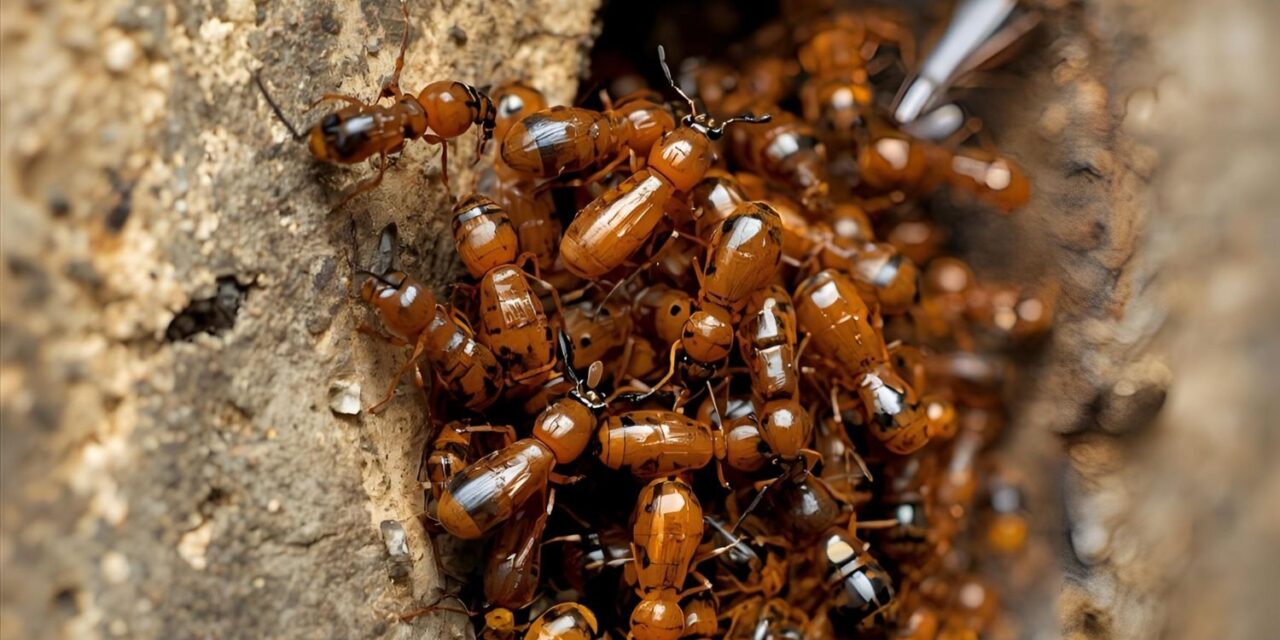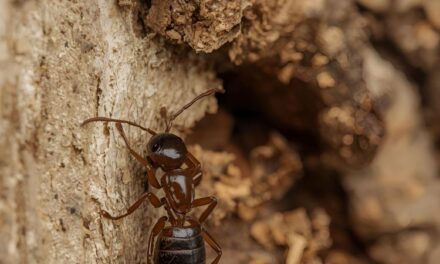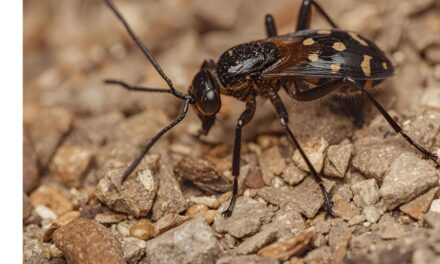Estimated reading time: 15 minutes
Key Takeaways
- Termites are a *significant threat* to wooden structures; early detection and swift action are crucial.
- Understanding *common signs* like mud tubes, frass, and hollow-sounding wood helps identify infestations.
- DIY options like *anti-termite sprays* and *boric acid* can treat small, localized problems.
- *Targeted solutions* are needed for specific areas like wooden doors, often using drill-and-inject methods.
- *Long-term protection* relies on environmental modifications, physical and chemical barriers, and regular inspections.
- For *widespread or persistent infestations*, professional intervention offers expertise, specialized tools, and guarantees.
- Choosing the *right treatment plan* depends on the infestation’s extent, termite type, budget, and long-term goals.
Table of Contents
- Effective Wood Termite Treatment & Long-Term Wood Termite Protection: A Comprehensive Guide to Eliminating and Preventing Infestations
- Key Takeaways
- 1. Understanding the Termite Threat to Wood
- 2. DIY Wood Termite Treatment Solutions for Active Infestations
- 3. Targeted Termite Control for Wooden Doors and Other Structures
- Techniques for Treating Door Frames, Panels, and Hinges (specific termite control for wooden doors methods)
- Considerations for Exterior vs. Interior Doors (factors for termite control for wooden doors)
- Prevention Tips for New Doors (part of wood termite protection for doors)
- Briefly Cover Other Common Areas (general wood termite treatment)
- 4. Long-Term Wood Termite Protection: Prevention is Key
- 5. When to Call the Professionals for Wood Termite Treatment
- 6. Choosing the Right Wood Termite Treatment Plan for Your Needs
- Conclusion
- Frequently Asked Questions
Termites are tiny creatures, but they can cause big problems. These wood-destroying insects are a huge threat to your home and everything made of wood inside it, like your furniture. They secretly chew away at wooden structures, weakening them over time.
This means that effective wood termite treatment is super important. It’s how you protect your valuable wooden belongings and keep your home safe from these hidden invaders.
This guide will teach you all about how to spot, treat, and stop termite problems. We’ll cover simple DIY ideas, special tips for places like termite control for wooden doors, and smart ways to get long-lasting wood termite protection.
By the end of this, you’ll know how to understand the termite threat, try DIY treatments, use special solutions for different areas, prevent termites from coming back, and know when it’s best to call in the experts.
1. Understanding the Termite Threat to Wood
Termites are more than just a nuisance; they are a serious danger to anything made of wood. Learning about them helps you protect your home.
Why Termites are Damaging to Wood
Termites are social insects, meaning they live in big groups, much like ants. Their main food source is cellulose, which is the main part of wood. They can digest this tough material thanks to tiny helpers (microorganisms) living in their guts.
When termites feed on wood, they create tunnels and hollow out timbers from the inside. This makes the wood weaker and weaker, bit by bit. Over time, this feeding behavior can lead to serious problems like reduced strength in your house’s structure and, eventually, the complete destruction of wooden parts in your home and furniture.
There are different types of termites, like *subterranean termites* (who live underground), *drywood termites* (who live inside wood), and *dampwood termites* (who like moist wood). Each kind has its own preferred spots and ways of causing damage. Understanding these differences is key to proper wood termite treatment and wood termite protection.
Common Signs of Termite Infestation in Wooden Items
Termites are good at hiding, but they leave clues. Knowing these signs can help you catch a problem early.
-
- Mud Tubes: Subterranean termites build special tunnels made of soil, wood, and their saliva. These “shelter tubes” are often seen on foundations, walls, or wooden beams. They act like highways, protecting termites as they travel between their nests in the ground and their food source – your wood!
-
- Damaged Wood Appearance: If wood looks like it has water damage or stains, it could be termites. Sometimes, when you break open infested wood, you might see a “maze-like” pattern inside. Wood that sounds hollow when you tap it could also be a sign of termite activity. For drywood termites, look for small, perfect round holes. These are “kick-out holes” where they push out their droppings.
-
- Frass (Termite Droppings): Drywood termites leave behind small, hard, hexagonal (six-sided) droppings called frass. These often look like sawdust or tiny coffee grounds and can be found in small piles near the infested wood. These pellets are a clear sign of active drywood termite activity and often mean you need specific wood termite treatment.
-
- Discarded Wings: When winged termites (called “alates”) leave their nests to find a mate and start new colonies, they often shed their wings after flying. You might find these small, clear wings near windows, doors, or lights, especially after a termite swarm. This is a strong indicator of a nearby termite colony.
-
- Sagging Floors/Ceilings, Buckling Wood, or Blistering Paint: These are serious warning signs. They mean that termites have likely caused significant damage to the wood beneath the surface. If floors feel spongy or ceilings sag, it’s often a sign of widespread structural damage. Blistering or peeling paint can also hide termite tunnels just underneath.
- “Clicking” Sounds: In very quiet rooms, you might sometimes hear a faint clicking sound coming from inside walls or wooden furniture. This sound can be made by soldier termites banging their heads against the tunnel walls. They do this to warn other termites of danger or to communicate. While hard to hear, it can be a rare but direct sign of activity, prompting a need for careful inspection for wood termite treatment.
2. DIY Wood Termite Treatment Solutions for Active Infestations
If you find a small, localized termite problem, you might be able to tackle it yourself. Here are some options for active wood termite treatment.
Anti-Termite Spray for Furniture
Using an anti-termite spray for furniture can be an effective way to deal with visible infestations.
Types of Sprays:
-
- Contact Killers: These sprays contain ingredients like pyrethroids (such as permethrin, bifenthrin, or cypermethrin). They kill termites as soon as the chemicals touch them. These are great for quickly getting rid of termites you can see directly on the surface of your furniture or wooden items.
-
- Residual Barriers: Some sprays create a protective shield that termites cannot detect. When termites walk over this treated area, they pick up the chemical and carry it back to their colony, spreading it to other termites. This “transfer effect” can help wipe out an entire termite colony over time. Fipronil-based products are well-known for this strong effect.
-
- Borate-based solutions: Products made with disodium octaborate tetrahydrate (often just called “borates”) are excellent for penetrating wood. Once absorbed, they act as a stomach poison for termites that eat the treated wood. They also help prevent future infestations by making the wood unappetizing to termites.
- Natural/Botanical Sprays: These options, like neem oil and orange oil (d-limonene), offer a more natural approach. Neem oil works by disrupting how insects grow and feed, making it hard for termites to survive. Orange oil can kill termites on contact by dissolving their exoskeletons (outer shells). While they can be useful as repellents or for very minor problems, their power to eliminate severe infestations can be limited.
How to Effectively Apply Anti-Termite Spray for Furniture:
-
- Identify Infested Areas: Before you spray, you need to know exactly where the termites are active. Look for mud tubes, frass, small holes, or damaged wood. Knowing the precise spots helps you treat them more effectively with your anti-termite spray for furniture.
-
- Access: For drywood termites living inside your furniture, you might need to drill small, tiny holes into the infested wood. This is only if it’s possible and won’t spoil the look of your furniture. These holes let you inject the liquid termiticide (the anti-termite chemical) directly into the tunnels where the termites live. For subterranean termites, the treatment often focuses more on creating a barrier in the soil around your home.
-
- Application: Spray the product thoroughly over the surface of any infested wood. If you’re using a product that soaks into the wood, like borates, make sure the surface is well-saturated. For contact killers, spray directly onto any termites you can see. If you’re injecting, use a special syringe or nozzle to get the chemical deep into the wood galleries.
- Repeat: Always read and follow the instructions on the product label. Some treatments require you to spray multiple times over a period to be fully effective. Consistent application is crucial for successful wood termite treatment.
Safety Precautions:
Safety is key when using any chemical product. Always wear the right personal protective equipment (PPE), like gloves, eye protection, and a mask, as instructed on the product label. Make sure the area you are working in has good air flow (ventilation). Keep children and pets away from treated areas until the spray is completely dry. Store all termite control products safely, out of reach, and dispose of empty containers properly according to local guidelines.
Other Common DIY Treatments (for wood termite treatment):
Besides sprays, there are other methods you can try for wood termite treatment.
-
- Boric Acid: This is a very effective solution when used correctly. Boric acid works in two main ways: it acts as a stomach poison for termites that eat it, and it also works as an abrasive dust, scratching their bodies and causing them to dry out. You can apply it as a dust directly into termite tunnels or galleries. You can also mix it with water to create a spray. This spray can be applied to unfinished wood surfaces, where it soaks in and provides long-lasting protection. However, it’s not the best choice for finished furniture, unless you can inject it directly into the wood without damaging the finish.
- Neem Oil: This natural insecticide comes from the neem tree. It messes with how termites feed, grow, and reproduce, making it harder for them to survive and multiply. You can dilute neem oil with water and spray it directly onto termites or areas of infested wood. While helpful, it’s generally more effective as a repellent or for small, surface-level infestations, rather than tackling a large, deep-seated termite problem.
3. Targeted Termite Control for Wooden Doors and Other Structures
Wooden doors are often made of softwoods or less dense materials, making them a common target for termites. Special methods are needed for termite control for wooden doors and other specific structures.
Techniques for Treating Door Frames, Panels, and Hinges (specific termite control for wooden doors methods):
-
- Drill-and-Inject Method: This is great for drywood termite problems that are just in one spot, like in a door frame or a wooden panel. You carefully drill small holes (about 1/8 inch or less, just a bit bigger than a tiny pencil tip) into the wood where you suspect termites are. Then, you use a special syringe or a small hand pump to inject a liquid termiticide (like a borate solution or fipronil) right into the termite tunnels inside the wood. After the treatment, these tiny drilled holes are sealed up so they aren’t noticeable. This direct approach ensures the treatment reaches the pests.
-
- Surface Application (Borates): For wooden doors that are not yet painted or sealed (like a new door or one being renovated), a borate solution is excellent. You can brush or spray this solution onto all parts of the wood door that you can reach. The borate soaks into the wood, making it toxic to termites. This not only treats any existing, shallow infestations but also protects the wood from future termite attacks, acting as a preventative measure as part of your wood termite protection strategy.
- Dusts: If you suspect termites are active in tiny cracks, small openings, or even around electrical outlets near door frames, you can use boric acid dust. This fine powder can be puffed into these small spaces. Termites that walk through the dust will pick it up on their bodies and carry it back to their nests, spreading the poison to other termites and helping with widespread wood termite treatment.
Considerations for Exterior vs. Interior Doors (factors for termite control for wooden doors):
-
- Exterior Doors: Doors that are outside your house are more likely to be attacked by subterranean termites. This is especially true if the door frame touches the soil or if it’s often damp. You might need to treat the soil around the door’s threshold (the bottom part of the frame) with a liquid termiticide to create a barrier. It’s also a good idea to use new exterior wood that has been pre-treated against termites, or to regularly inspect and treat existing ones. If you use chemical treatments, choose ones that are made to withstand outdoor weather conditions.
- Interior Doors: Inside doors are usually more at risk from drywood termites, which live entirely inside the wood. However, if subterranean termites have already found a way into your house, they can certainly reach interior doors too. For interior doors, the focus should be on direct wood treatment methods, like the drill-and-inject method or surface application if the wood is unfinished.
Prevention Tips for New Doors (part of wood termite protection for doors):
It’s always better to stop termites before they start. For new wooden doors, consider these steps:
-
- Pre-treat new wooden doors and frames with a borate solution *before* you paint or seal them. This is especially important for exterior doors or doors in areas known to have termite problems. This preventative step offers crucial wood termite protection.
- Ensure proper sealing around door frames. This helps prevent moisture from getting in, which termites love, and also blocks tiny gaps that could be entry points for these pests.
Briefly Cover Other Common Areas (general wood termite treatment):
Termites aren’t just a problem for doors. Many other wooden parts of your home can be at risk. Effective wood termite treatment needs to consider these too.
-
- Window Frames: Just like doors, window frames can be treated using similar drill-and-inject methods for localized infestations, or surface applications of borate solutions for unfinished wood to provide lasting wood termite protection.
-
- Wooden Beams/Joists: These are important structural parts of your house. Termite infestations here often mean significant damage and usually require professional help because of their importance and how hard they are to reach. Borate treatments can be good for preventing problems or treating accessible surfaces, but extensive damage needs an expert.
- Skirting Boards (Baseboards): If you find termites in skirting boards, you might need to carefully remove them to see the full extent of the problem and treat the area behind them. Localized treatments or dusts can then be applied to eliminate the pests.
4. Long-Term Wood Termite Protection: Prevention is Key
The best wood termite treatment often starts with strong prevention. Keeping termites away from your home in the first place is far easier than getting rid of them once they’re inside. This section focuses on long-term wood termite protection.
Environmental Modifications (for wood termite protection):
Changing your home’s surroundings can make it much less attractive to termites.
-
- Reducing Moisture: Termites, especially subterranean termites, love moisture. Fix any leaky pipes, dripping roofs, or air conditioning units right away. Make sure the ground around your house slopes away from the foundation so water doesn’t pool there. If you have a damp basement or crawl space, use a dehumidifier to dry out the air.
-
- Improving Ventilation: Crawl spaces and attics need good airflow. Make sure they are well-ventilated to stop humidity from building up. Less humidity means fewer attractive conditions for termites and other pests.
-
- Landscaping: Keep mulch, firewood piles, and thick plants away from your house’s foundation. These can hide termites and give them an easy bridge into your home. Trim shrubs and trees so they don’t touch the house. Remove any old tree stumps or dead wood from your yard, as these are perfect food sources for termites.
- Gutters: Keep your gutters clean and make sure they direct rainwater far away from your house’s foundation. Clogged gutters can cause water to spill over and soak the soil next to your home, creating damp conditions that subterranean termites adore.
Physical Barriers (for wood termite protection):
These methods create a physical obstacle that termites cannot get past.
-
- Stainless Steel Mesh: Very fine mesh barriers, like those made of stainless steel (e.g., Termi-Mesh), can be installed when a house is being built. These are put around foundations, pipes, and other spots where termites might try to enter. The mesh is so tiny that termites can’t squeeze through it, providing a durable form of wood termite protection.
-
- Sand Barriers: Using a specific type and size of sand can create a barrier that termites find too difficult to tunnel through. This graded sand is often used around foundations or under concrete slabs to physically block termite entry.
- Concrete Foundations: Make sure your concrete foundation is solid and free of any cracks. It’s also recommended to have at least 6 inches of exposed concrete foundation between the soil and any wooden parts of your house. This gap makes it harder for termites to build mud tubes from the ground directly into your home’s wood.
Chemical Barriers (for wood termite protection):
Chemicals can also be used to create zones that kill or deter termites.
-
- Soil Treatments: This is a common and very effective professional method for subterranean termites. Liquid termiticides (like fipronil or imidacloprid) are carefully applied to the soil all around the outside of your house. This creates a treated zone that either kills termites that come into contact with it or repels them. Some advanced products are “non-repellent,” meaning termites don’t detect them, tunnel through the treated soil, pick up the chemical, and then spread it to the entire colony. These treatments are a cornerstone of long-term wood termite protection.
- Wood Treatments: Borate-based products, as mentioned earlier, can be applied directly to raw, unpainted, or unsealed wood. This is often done during construction or renovation. The borates soak into the wood, making it resistant to both termites and certain types of fungi. This provides a lasting shield against future infestations.
Regular Inspection and Maintenance Routines (for wood termite protection):
Staying on top of things is crucial for effective wood termite protection.
-
- Annual Professional Inspections: It’s highly recommended to have a professional termite inspector check your home once a year, especially if you live in an area where termites are common. Professionals have the training and tools to spot early signs of termites that you might miss, allowing for early wood termite treatment before major damage occurs.
-
- Homeowner Inspections: You should also regularly check your own home. Look in basements, crawl spaces, around the foundation, in attics, and on all accessible wooden structures. Look for any signs of termites like mud tubes, frass, or damaged wood.
- Seal Cracks: Walk around your house and seal any cracks you find in the foundation, around utility pipes (where they enter the house), and in exterior walls. These tiny openings are potential entry points for termites, so sealing them up is a simple but effective preventative measure.
5. When to Call the Professionals for Wood Termite Treatment
While DIY methods can work for small, easy-to-reach termite problems, there are many times when calling an expert for wood termite treatment is the smartest and safest choice.
Situations Requiring Professional Intervention (for wood termite treatment):
-
- Widespread or Advanced Infestations: If you find termites in many different places around your home, or if you suspect there’s a lot of hidden damage (especially if it affects the structure of your house), it’s time for professionals. A widespread problem needs a comprehensive plan.
-
- Inaccessible Areas: Termites often hide in places you can’t easily reach, like inside walls, under concrete slabs, or deep in your attic. Professionals have special equipment and knowledge to treat these hidden areas effectively, ensuring complete wood termite treatment.
-
- Persistent Problems: If you’ve tried DIY methods, but the termites keep coming back, it means your efforts aren’t strong enough. Professionals can use more powerful and targeted solutions to finally get rid of the infestation for good.
-
- Subterranean Termites: These termites live in the soil and build complex tunnels. Getting rid of them usually requires specialized soil barrier treatments or advanced bait systems. These methods are usually beyond what a homeowner can do effectively on their own.
- Drywood Termites Needing Fumigation: For very bad drywood termite infestations, especially if they are throughout the house, “tent fumigation” is often the most effective solution. This involves covering your entire house with a large tent and filling it with a special gas to kill the termites. This is a highly specialized process that *must* be done by trained professionals due to safety concerns and the specific chemicals involved.
Benefits of Professional Wood Termite Treatment:
Choosing a professional brings many advantages that DIY simply cannot match for comprehensive wood termite treatment.
-
- Expertise and Experience: Pest control professionals are trained experts. They know how to identify different termite species, understand their habits, and find hidden termite colonies that you might never spot.
-
- Specialized Equipment: Professionals have access to advanced tools. This includes things like thermal imaging cameras to see heat signatures of termites inside walls, moisture meters to find damp wood, boroscopes (tiny cameras) to look into hidden spaces, and high-pressure injection equipment for precise chemical application.
-
- Effective, Long-Term Solutions: Professionals use powerful, often restricted-use termiticides that are not available to the general public. These chemicals provide long-lasting control and often come with warranties, giving you peace of mind that the problem is truly solved. Their wood termite treatment strategies are designed for lasting results. https://www.lexhygiene.com/long-term-pest-management-how-termite-pest-control-services-in-delhi-ncr-go-beyond-quick-fixes/
-
- Safety: Handling strong chemicals requires training. Professionals are skilled in the safe handling and application of potent pesticides, which helps to keep your family, pets, and the environment safe while still being effective against termites.
- Guarantees: Reputable pest control companies often offer guarantees or warranties on their termite work. This means if the termites come back within a certain period, they will re-treat your home at no extra cost. This guarantee offers great assurance.
How to Choose a Reliable Pest Control Service:
If you decide to call in the experts for wood termite treatment, choosing the right company is crucial. https://www.lexhygiene.com/how-to-choose-the-best-termite-control-service-in-delhi-ncr/
-
- Licensing and Insurance: Make sure the company is licensed by your state’s pest control board. They should also carry enough liability insurance. This protects you in case of any accidents or damages during the treatment process.
-
- Experience and Specialization: Look for companies that have a lot of experience specifically with termite control, and ideally, those familiar with the types of termites common in your local area. Termite treatment is a specialized field.
-
- Reputation and Reviews: Check what other people are saying. Look at online reviews on sites like Google, Yelp, or the Better Business Bureau (BBB). You can also ask friends, family, or neighbors for recommendations.
-
- Transparent Pricing and Guarantees: Get a detailed written estimate that clearly explains all costs. Understand exactly what the service includes, such as follow-up visits or re-treatment policies. A clear warranty is a good sign of a company that stands behind its wood termite treatment.
-
- Integrated Pest Management (IPM) Approach: Some companies use an IPM approach. https://lexhygiene.com/benefits-of-integrated-pest-management This means they focus on long-term, sustainable solutions that use chemicals only when necessary and aim for the smallest environmental impact.
- Inspection: A good company will always conduct a thorough inspection of your home before giving you a quote or suggesting a treatment plan. They need to understand the full scope of the infestation before they can offer the best wood termite treatment.
6. Choosing the Right Wood Termite Treatment Plan for Your Needs
Deciding on the best wood termite treatment plan for your home depends on several important things. There’s no one-size-fits-all answer, so it’s good to think about your specific situation.
Factors to Consider:
-
- Extent of Infestation: How big is the problem? If you have a tiny, localized issue that’s easy to see and reach, you *might* be able to handle it yourself with DIY methods. However, if termites are everywhere or if you suspect they are causing structural damage to your home, professional help is definitely *required*.
-
- Type of Termite: Knowing which kind of termite you have (subterranean, drywood, or dampwood) is super important. Different species require very different ways of treating them. For example, subterranean termites need soil treatments, while drywood termites might need wood injections or even fumigation. The type of termite will largely dictate the best wood termite treatment.
-
- Type of Wood/Structure: Think about what kind of wood is affected. Is it an antique piece of furniture that needs careful handling, or is it a hidden structural beam? How easy is it to reach the infested wood? The value of the wood and the potential for damage during treatment will influence your choices.
-
- Budget: DIY solutions are usually cheaper at first, but they might not fix the problem completely or for very long. Professional services are an investment, but they typically offer a much more comprehensive and guaranteed solution, giving you long-term wood termite protection. Consider what you can afford and what level of risk you’re willing to take.
-
- Long-Term Goals: Are you just looking for a quick fix to get rid of the termites you see right now? Or are you looking for a thorough, ongoing plan for wood termite protection that will keep your home safe for years to come? Your goals will help you decide between a temporary patch and a lasting solution.
- Risk Tolerance: Are you comfortable handling pesticides, drilling into wood, and crawling into tight spaces? Or do you prefer to leave these tasks to experts who are trained and insured? Your comfort level with these activities should play a role in your decision.
Conclusion
Termites are a serious threat to your home, but by being smart and acting quickly, you can protect your valuable wooden belongings. It’s so important to be proactive and take swift action as soon as you suspect these silent destroyers are at work.
Effective wood termite treatment means knowing the signs of an infestation, choosing the right DIY or professional solutions, and putting in place strong wood termite protection strategies. Whether you tackle a small problem yourself or bring in the experts for a larger battle, your goal is the same: to safeguard your home.
Take the time to look at your unique situation carefully. Think about the type of termites, how bad the problem is, and what kind of budget and goals you have. Then, pick the most suitable plan to keep your precious wooden structures safe from these destructive pests. Your efforts today will protect your home for many years to come.
Frequently Asked Questions
What are the most common signs of a termite infestation?
The most common signs include mud tubes on foundations, damaged wood that sounds hollow or has a maze-like pattern, frass (termite droppings) resembling sawdust, discarded wings near windows, and sometimes sagging floors or blistering paint.
Can I effectively treat termites myself, or do I always need a professional?
For small, localized infestations that are easily accessible, DIY methods like anti-termite sprays or boric acid can be effective. However, for widespread problems, inaccessible areas, persistent issues, or subterranean termite infestations, professional help is strongly recommended for effective and long-term wood termite treatment.
What are some key ways to prevent termites from coming back?
Long-term wood termite protection involves environmental modifications like reducing moisture and improving ventilation, installing physical barriers (e.g., stainless steel mesh, sand barriers), applying chemical barriers (soil or wood treatments), and conducting regular inspections (both homeowner and professional) to catch issues early.
Are natural termite treatments like neem oil effective?
Natural treatments like neem oil or orange oil can be useful as repellents or for very minor, surface-level infestations. They work by disrupting termite growth or dissolving their exoskeletons. However, their ability to eliminate severe or deep-seated infestations is often limited compared to conventional chemical treatments or professional methods.










